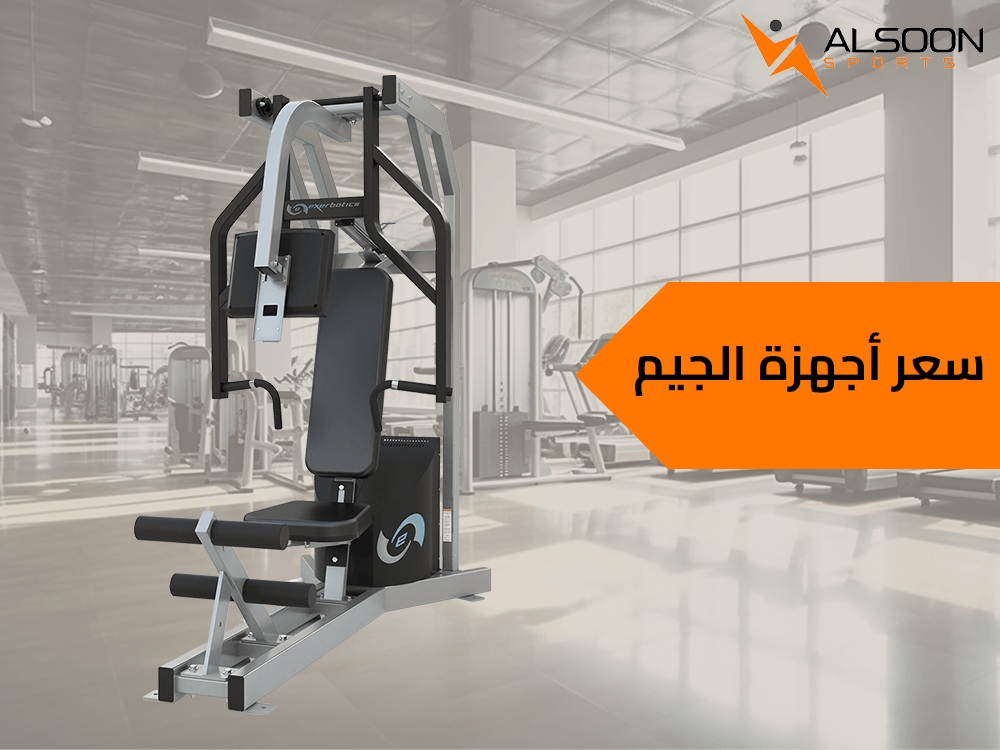Gym equipment is essential for achieving fitness and building muscles, as it offers users a wide variety of exercises that can be performed daily. Home gym equipment is often considered one of the most important tools for building a healthy and athletic body, helping users improve their physical levels. In this article, we will discuss the prices of gym equipment, their benefits, and the different types available. Stay tuned for more details:
Gym Equipment Price
There is a significant variation in gym equipment prices due to several factors, including the type of equipment, quality of construction, and brand. Prices usually vary depending on the type of device. There are simple devices such as stationary bikes or free weights, and sometimes the prices can be high for advanced equipment like multifunctional electric treadmills or machines that rely on air resistance systems.
Some home equipment can be less expensive, but professional gym equipment used in fitness centers is often more costly due to its durability and ability to withstand heavy use. However, at Alsoon, we offer you the latest, highest quality, and most professional equipment for an excellent workout at competitive prices!
Achieve the best balance with us and purchase home gym equipment from our store without hesitation! We are here to help you start your own project and fully furnish your gym with the latest and most high-quality equipment at prices that suit you to achieve the best results.
Benefits of Gym Equipment
Gym equipment varies, and each type offers multiple benefits that help you achieve excellent and desired results for a healthy and beneficial workout. Here are some important benefits:
- Gym equipment helps to significantly improve physical fitness by providing a variety of exercises that target all the muscles in the body. Whether the goal is to improve strength, cardiovascular fitness, or body flexibility, it can be achieved by using the appropriate equipment.
- Gym equipment also provides variety in exercises, helping to avoid routine and boredom. Each device can be dedicated to a specific set of exercises, allowing the user to focus on particular areas of the body.
- Regular use of gym equipment can improve heart health, increase muscle strength, and enhance body flexibility, leading to a reduced risk of chronic diseases such as heart disease and diabetes.
- Whether the goal is to lose weight, build muscle, or improve general fitness, regular use of gym equipment helps achieve these goals effectively.
Types of Gym Equipment
- Cardio Equipment:
- This includes treadmills, stationary bikes, and ellipticals. These machines are used to improve cardiovascular fitness and burn calories, helping to maintain body balance and strengthen heart muscles.
- Weight and Resistance Equipment:
- This includes weight lifting machines, cables, and air resistance devices. These machines are used to strengthen and increase muscle size.
- Multifunctional Equipment:
- These devices allow multiple exercises to be performed on a single machine, making them ideal for people who want to save space at home or who are looking for a comprehensive solution for full-body training.
- Stretching and Balance Equipment:
- Examples include balance balls and yoga mats. These devices are used to improve flexibility, balance, and strengthen core muscles.
Remember, gym equipment is an excellent investment for anyone looking to improve their physical fitness and overall health. While their prices may vary based on several factors, the benefits they offer make them worth the investment!
How to Perform Exercises Correctly
Performing exercises correctly is crucial for achieving the desired benefits and reducing the risk of injury. Here are some important tips to help you perform exercises correctly:
- Before starting any exercise, it's recommended to warm up for 5-10 minutes. This initial step helps to activate the muscles and boost blood circulation. Warming up can include light cardio exercises such as brisk walking or jumping rope and joint movement exercises such as shoulder, wrist, and knee rotations.
- The warm-up period is essential for increasing blood flow to the muscles and preparing the body for physical activity.
- If you're new to exercising or trying a new workout, make sure to learn the correct technique. You can consult a fitness trainer or watch reliable instructional videos to avoid common mistakes.
- During the workout, use mirrors to monitor your body posture. This helps in correcting your technique and avoiding incorrect movements.
- When lifting weights or performing strength exercises, it’s important to control your breathing. Usually, exhale when lifting the weight or during the difficult movement, and inhale when returning to the starting position.
- Maintain regular breathing when performing cardio exercises like running or cycling.
- If you're using weights, start with a weight that you can easily control while maintaining proper technique. Gradually increase the weight as your strength improves.
- Don’t push yourself too hard at the beginning. Give your body time to adapt to the new exercises and gradually increase the intensity.
- When lifting weights or performing floor exercises, make sure that your spine is straight and stable.
- When performing exercises that require balance, such as squats or lunges, focus on distributing your weight evenly and maintaining body stability.
- Make sure to target all major muscle groups through various exercises. Diversifying your routine helps to avoid fatigue and achieve better results.
- It’s recommended to change your workout routine regularly to avoid boredom and to stimulate the muscles in new ways.
- Give your body rest periods between exercises to avoid fatigue and injuries. The length of the rest period depends on the type and intensity of the exercise.
- Ensure you get enough rest between workout sessions, especially when doing strength exercises. The body may need a day or two to recover from intense workouts.
How to Use Equipment Correctly
- Before using equipment in the gym, make sure to adjust it according to your height and needs. Trainers can assist with this.
- Wear comfortable workout clothes and appropriate athletic shoes to provide support and protection during exercise.
- If you feel sharp or unusual pain during exercise, stop immediately and consult a trainer or medical professional. Sharp pain may be a sign of injury.
- If you feel fatigued or stressed, reduce the intensity of the workout or take a break.
Notes:
- After completing your workout, do some cool-down exercises such as light stretching to help reduce muscle tension and prevent stiffness.
- Perform deep breathing exercises to calm your body and mind after the workout.
Performing exercises correctly is not only about achieving the best results but also about maintaining your safety and avoiding injuries. By following these tips, monitoring your posture, and using the appropriate equipment, you can enjoy safe and effective workouts that promote fitness and well-being.
It's important to choose the right equipment that meets your personal needs and helps you achieve your fitness goals efficiently.

